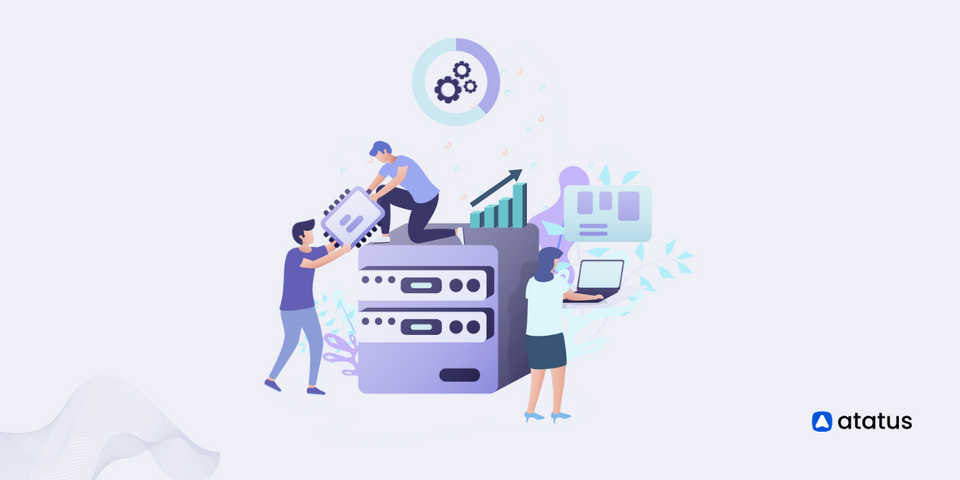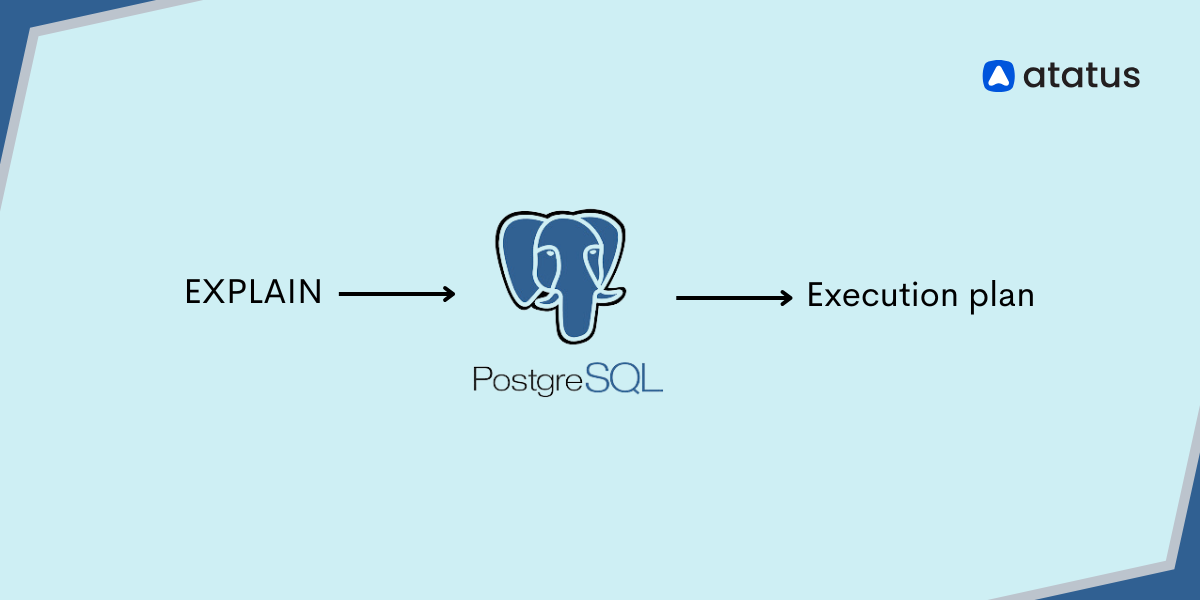Database Monitoring: Ensuring Optimal Performance and Reliability
In today's world, where businesses are heavily reliant on technology, databases have become a crucial component of business operations. Databases are the backbone of any organization, containing vast amounts of data that is essential for smooth functioning.
However, with the amount of data that databases store, it is not uncommon for them to encounter issues that could lead to downtime and data loss. To ensure that such issues are detected and resolved in a timely manner, database monitoring is critical.
Database monitoring refers to the process of tracking and analyzing database performance, security, and access to ensure that they are functioning as intended. The importance of database monitoring cannot be overstated.
It allows organizations to identify and resolve issues before they cause significant disruptions or data loss. Furthermore, database monitoring provides insights into database usage patterns, which can be used to optimize performance and improve efficiency.
Table of Contents
- What is Database Monitoring?
- How does Database Monitoring works?
- Features of Database Monitoring
- Database Monitoring Metrics
- Benefits of Database Monitoring
What is Database Monitoring?
Database monitoring is the process of continuously monitoring and analyzing the performance, health, and availability of a database system. It involves collecting and analyzing data from various sources, such as database logs, performance counters, and system metrics, to identify potential issues and trends.
The data collected during database monitoring is used to track the usage of system resources, detect and diagnose performance issues, and optimize the database environment to ensure maximum efficiency and availability.
Database monitoring typically involves setting up monitoring agents on database servers to collect performance data and other information about database activity. The data collected is then analyzed and visualized through dashboards and reports to provide real-time visibility into the health and performance of the database system.
Alerts can also be set up to notify administrators or operators when specific metrics exceed predefined thresholds, enabling them to take proactive actions to resolve issues before they impact the performance or availability of the database system.
Database monitoring is essential for ensuring the reliability and availability of database systems, especially in mission-critical environments where downtime or performance issues can have severe consequences.
By continuously monitoring database activity and identifying potential issues, organizations can take proactive steps to optimize their database environments, improve performance, and minimize the risk of downtime.
How does Database Monitoring works?
Database monitoring works internally by collecting data from various sources within the database system. This data is collected by monitoring agents, which are installed on database servers and collect data from various sources such as database logs, performance counters, and system metrics. Once the data is collected, it is analyzed and visualized through dashboards and reports to provide real-time visibility into the performance and health of the database system.
The monitoring agents are responsible for collecting various types of data from the database system, including performance metrics such as CPU usage, memory usage, disk usage, query response time, connection pool usage, transactions, and connections. The agents may also collect data on user activity, such as login attempts, queries executed, and data modifications made.
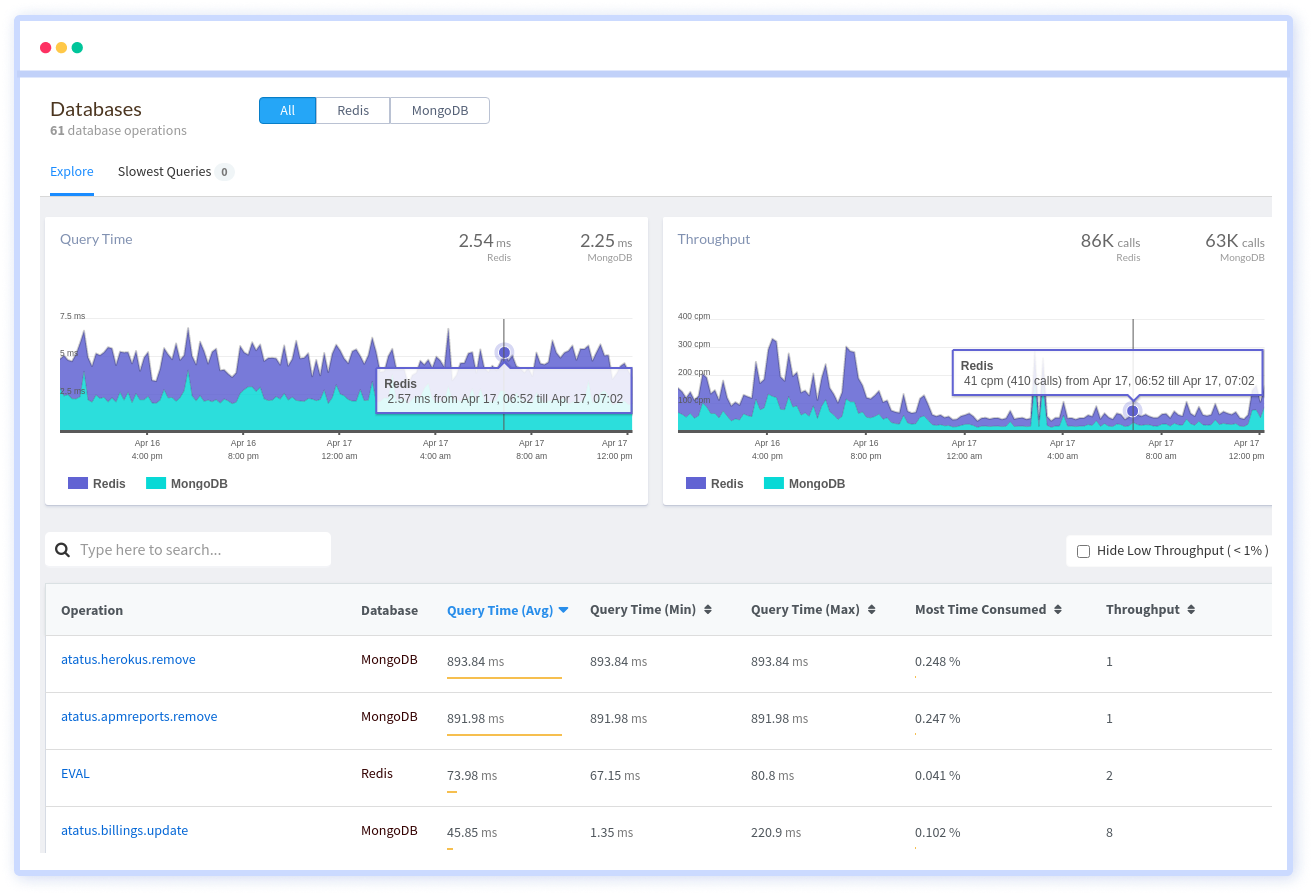
The collected data is then processed by the monitoring system, which can be configured to generate alerts based on predefined thresholds. For example, if the system detects that CPU usage has exceeded a certain threshold for a specified period of time, it may generate an alert notifying administrators or operators of the issue.
Visualization tools such as dashboards and reports provide real-time insights into the performance and health of the database system. These tools can be customized to meet specific organizational needs, such as integrating with other systems or creating custom metrics.
Database monitoring is a continuous process, with monitoring agents collecting data at regular intervals and the monitoring system processing the data in real-time. By continuously monitoring the database system, organizations can proactively identify and address potential issues, optimize performance, and minimize the risk of downtime or performance issues.
Features of Database monitoring
Database monitoring provides a wide range of features that enable organizations to track the performance and health of their database systems. Here are some of the key features of database monitoring:
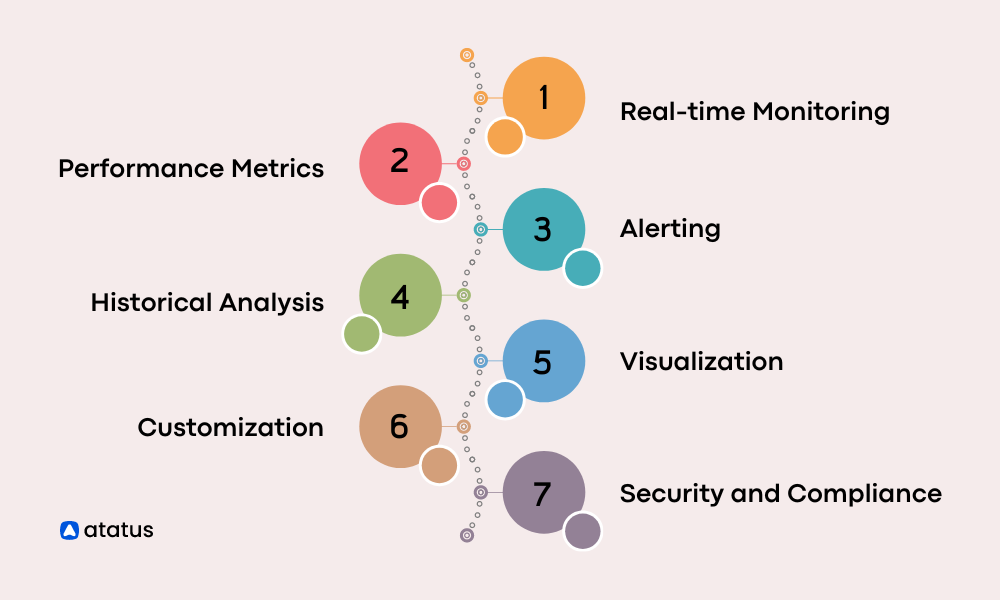
- Real-time Monitoring: Database monitoring provides real-time visibility into the performance and health of the database system, enabling administrators and operators to detect and diagnose issues as they occur.
- Performance Metrics: Database monitoring collects a wide range of performance metrics, such as CPU usage, memory usage, disk usage, query response time, connection pool usage, transactions, and connections.
- Alerting: Database monitoring allows administrators and operators to set up alerts for specific metrics or threshold levels. Alerts can be delivered via email, SMS, or other notification mechanisms, ensuring that issues are promptly addressed.
- Historical Analysis: Database monitoring solutions store historical data, which can be used to analyze trends, detect patterns, and identify potential issues. Historical data can also be used for capacity planning and performance optimization.
- Visualization: Database monitoring provides visualization tools, such as dashboards and reports, which present data in a clear and meaningful way. Visualization enables administrators and operators to quickly identify issues and take corrective actions.
- Customization: Database monitoring solutions can be customized to meet specific organizational needs, such as integrating with other systems, customizing alerting and reporting, or creating custom metrics.
- Security and Compliance: Database monitoring solutions ensure the security and compliance of database systems by tracking user activity, identifying potential security breaches, and maintaining audit trails.
Here is our list of the three best application performance monitoring tools:
There are several database monitoring tools available in the market, but here are three of the best ones, including Atatus:
- Atatus: Atatus is a comprehensive database monitoring tool that offers real-time monitoring of your databases, along with detailed insights into performance and availability. It supports a wide range of databases such as MongoDB, Redis, MySQL, and PostgreSQL. It offers features such as slow query analysis, error tracking, etc. Atatus also provides a range of integrations with other tools and services, including Slack, JIRA, and GitHub etc.
- SolarWinds Database Performance Analyzer: This is a powerful database monitoring tool that provides deep insights into your database performance. It monitors your database in real-time, identifies and resolves performance issues, and provides recommendations for optimization. It supports a wide range of database platforms such as Oracle, SQL Server, MySQL, and DB2.
- Nagios XI: Nagios XI is a popular open-source monitoring tool that provides comprehensive monitoring of your database infrastructure. It offers a range of features such as database health checks, query monitoring, and performance trending. It also supports custom scripts and plugins, allowing you to customize your monitoring setup.
Database Monitoring Metrics
Database monitoring tools offer a range of metrics that help database administrators (DBAs) monitor their database systems' health, performance, and availability. These metrics can help identify potential issues and optimize the database for better performance.
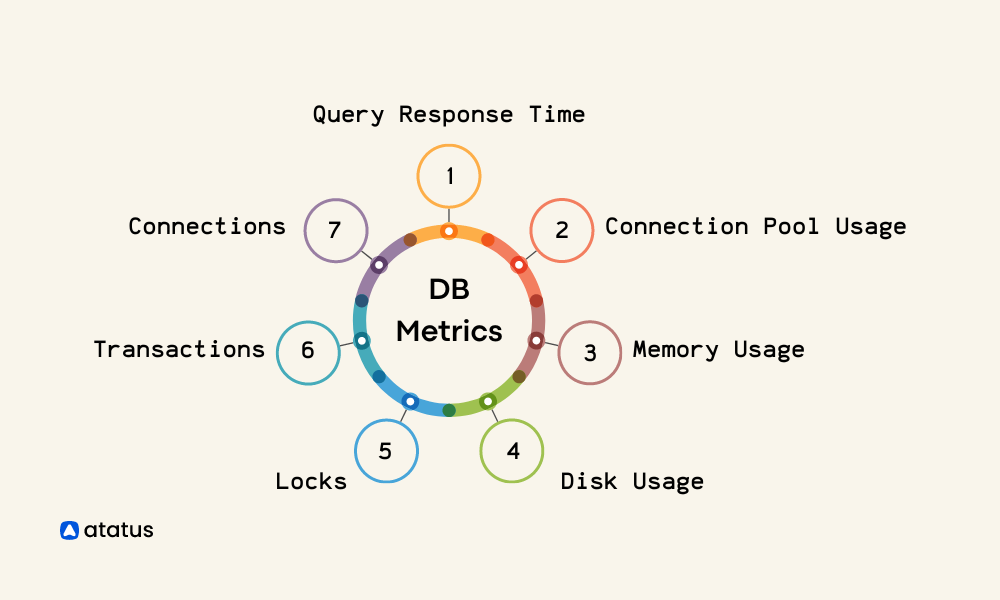
Here are some commonly offered metrics by database monitoring tools with their use cases:
- Query Response Time: This metric measures the time it takes for a query to execute and return results. Monitoring this metric helps to identify slow queries, which can cause performance issues and impact the user experience.
- Connection Pool Usage: Connection pool usage metrics show the number of active connections in the pool, the number of idle connections, and the maximum number of connections allowed. This metric helps to identify if you are running out of connections and can help to prevent connection pool exhaustion.
- Memory Usage: Memory usage metrics show how much memory is being used by the database process. Monitoring this metric can help to identify if the database is running out of memory, which can lead to performance issues.
- Disk Usage: Disk usage metrics show how much disk space is being used by the database. Monitoring this metric helps to ensure that you have enough disk space to store your data.
- Locks: Locking metrics show the number of locks held by the database. Locks can cause performance issues, especially when there are many concurrent transactions. Monitoring locking metrics can help to identify potential issues.
- Transactions: Transaction metrics show the number of transactions processed by the database. Monitoring this metric helps to identify if there are any issues with transaction processing.
- Connections: Connection metrics show the number of active connections to the database. Monitoring this metric helps to identify if there are any issues with connection management.
Benefits of Database Monitoring
Database monitoring is essential for ensuring the reliability, availability, and performance of databases. Here are some of the benefits of database monitoring:
- Identifying Performance Issues: Database monitoring can help to identify performance issues such as slow queries, long response times, and high resource utilization. By monitoring these metrics, you can identify the root cause of the issue and take corrective actions to improve the performance of your database.
- Preventing Downtime: Database downtime can be costly in terms of lost revenue, lost productivity, and damage to your organization's reputation. Database monitoring can help to detect potential issues before they become critical and prevent downtime by taking proactive actions.
- Improving Security: Database monitoring can help to detect unauthorized access attempts, suspicious activities, and other security-related issues. By monitoring these metrics, you can quickly detect and respond to security incidents and prevent data breaches.
- Ensuring Compliance: Many regulatory frameworks such as HIPAA, PCI-DSS, and GDPR require organizations to monitor their databases to ensure compliance. Database monitoring can help to meet these requirements and avoid costly penalties and legal consequences.
- Optimizing Resource Utilization: Database monitoring can help to identify resource-intensive queries, optimize database configurations, and improve overall resource utilization. By optimizing resource utilization, you can improve the scalability and efficiency of your database and reduce costs.
- Facilitating Capacity Planning: Database monitoring can provide valuable insights into database usage trends, growth patterns, and resource utilization. By analyzing these metrics, you can plan for future capacity needs and avoid capacity-related issues.
Conclusion
In conclusion, database monitoring is a critical process for ensuring database systems' reliability, availability, and performance. With the increasing volume and complexity of data, it has become essential to have a robust monitoring system to track database activity, detect potential issues, and optimize system performance.
By monitoring various parameters such as database queries, transactions, disk usage, and CPU utilization, database administrators can identify potential issues and take corrective actions before they impact the database.
With the help of advanced database monitoring tools, administrators can also gain valuable insights into database performance trends, resource usage patterns, and user behavior, which can inform capacity planning, and security strategies.
By implementing a comprehensive database monitoring solution, organizations can improve the efficiency and availability of their database systems, optimize performance, and reduce the risk of downtime or performance issues. With the increasing importance of data in modern business environments, investing in database monitoring is essential to ensure the organization's success.
Database Monitoring with Atatus
Atatus provides you an in-depth perspective of your database performance by uncovering slow database queries that occur within your requests, and transaction traces to give you actionable insights.
With normalized queries, you can see a list of all slow SQL calls to see which tables and operations have the most impact, know exactly which function was used and when it was performed, and see if your modifications improve performance over time.
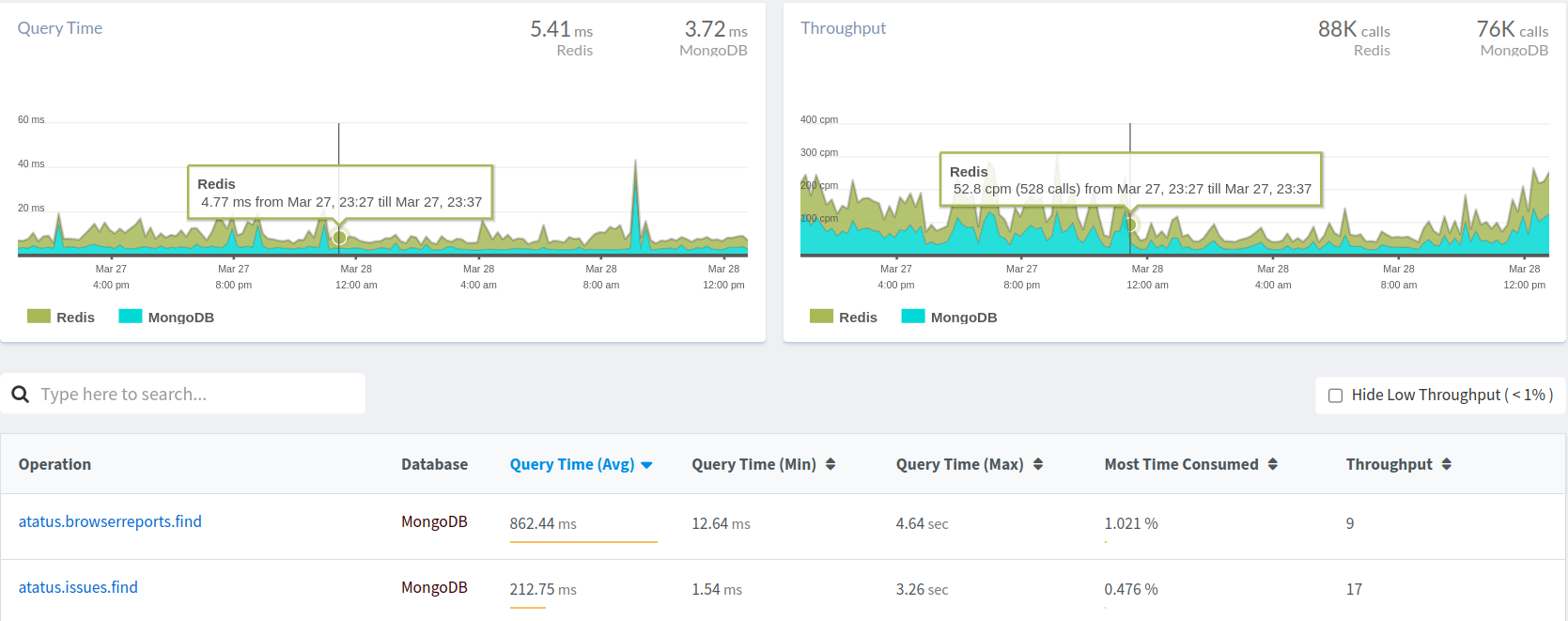
Atatus benefit your business, providing a comprehensive view of your application, including how it works, where performance bottlenecks exist, which users are most impacted, and which errors break your code for your frontend, backend, and infrastructure.
#1 Solution for Logs, Traces & Metrics
APM
Kubernetes
Logs
Synthetics
RUM
Serverless
Security
More

